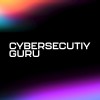In a world that seems obsessed with teaching everyone how to code, NVIDIA CEO Jensen Huang just flipped the script. At a recent global tech event, he made a bold statement:
“Don’t learn to code. Learn to prompt. Learn to communicate with AI.”
The internet immediately buzzed with hot takes and debates. But what did he really mean? And what does this mean for those of us in cybersecurity, a field traditionally rooted in code, scripts, and technical mastery?
Let’s break it down.
The Context: Why “Don’t Learn to Code” Isn’t Anti-Tech
Jensen Huang isn’t discouraging technical literacy. Quite the opposite—he’s pointing out that we’re entering an era where coding isn’t the final destination—it’s just one path.
AI models like ChatGPT, Claude, Gemini, and NVIDIA’s own platforms are abstracting traditional programming. We no longer need to “speak machine” with syntax like Python or JavaScript. Instead, we speak in prompts—structured, strategic natural language—and machines generate code, data pipelines, or even security policies for us.
The skill now?
Knowing what to ask and how to ask it.
What This Means for Cybersecurity Professionals
In cybersecurity, this shift is seismic.
1. Prompt Engineering > Bash Scripting
You don’t need to memorize every grep, awk, or iptables command.
Now, you can ask your AI assistant:
“Generate an incident response script for a ransomware attack in an AWS ECS cluster.”
And it does.
But the catch? You need to understand the incident, the cloud topology, and the threat actor’s intent. You can’t outsource that thinking.
2. Contextual Thinking Is the New Superpower
AI is great at tasks, but not at strategy. Knowing how attackers pivot in lateral movement, or why MFA bypasses happen, still requires human judgment and domain intuition.
Jensen’s advice pushes us to stop grinding out low-level tasks and instead focus on higher-order reasoning—the kind AI can’t (yet) replicate.
3. Language as a Cyber Weapon
Whether it’s crafting phishing emails or engineering zero-day exploits, language is central to both cyber offense and defense.
The same is now true for interacting with AI tools:
- Writing detection rules in natural language
- Requesting security architecture diagrams
- Summarizing attack surface exposure for the board
This requires clarity of thought, structured logic, and understanding of attacker motives—all expressed in plain language.
So, What Should You Study Instead?
Jensen Huang emphasized learning domain expertise, systems thinking, and human-AI collaboration. Here’s how that translates in cybersecurity:
| Instead of… | Study This |
|---|---|
| Learning a new programming language | Mastering prompt frameworks (e.g., chain-of-thought prompting, role-based prompts) |
| Memorizing tool commands | Understanding security frameworks (MITRE ATT&CK, NIST, Zero Trust) |
| Building tools from scratch | Learning to orchestrate AI tools for detection, forensics, and reporting |
| Manual incident response playbooks | Designing adaptive AI-driven workflows |
Cybersecurity Jobs Are Changing—Fast
In the near future:
- AI Security Analysts will triage alerts by prompting models.
- Threat Intelligence Leads will use LLMs to summarize reports, correlate indicators, and suggest actions.
- CISOs will rely on AI dashboards that interpret security posture and answer “what-if” questions on demand.
If you’re still writing bash scripts for every task, you’re competing with a model that does it in seconds.
But if you understand how to ask, verify, and decide—you’re invaluable.
Final Thoughts: Don’t Abandon Code—Transcend It
Jensen Huang’s message isn’t about dismissing coding—it’s about transcending it. It’s about shifting from operator to strategist. And in cybersecurity, that mindset can mean the difference between reacting to threats… and preventing them altogether.
So yes, maybe don’t just learn to code.
Learn to think, question, prompt, and lead.
Because in the age of AI, your mind is the interface.
